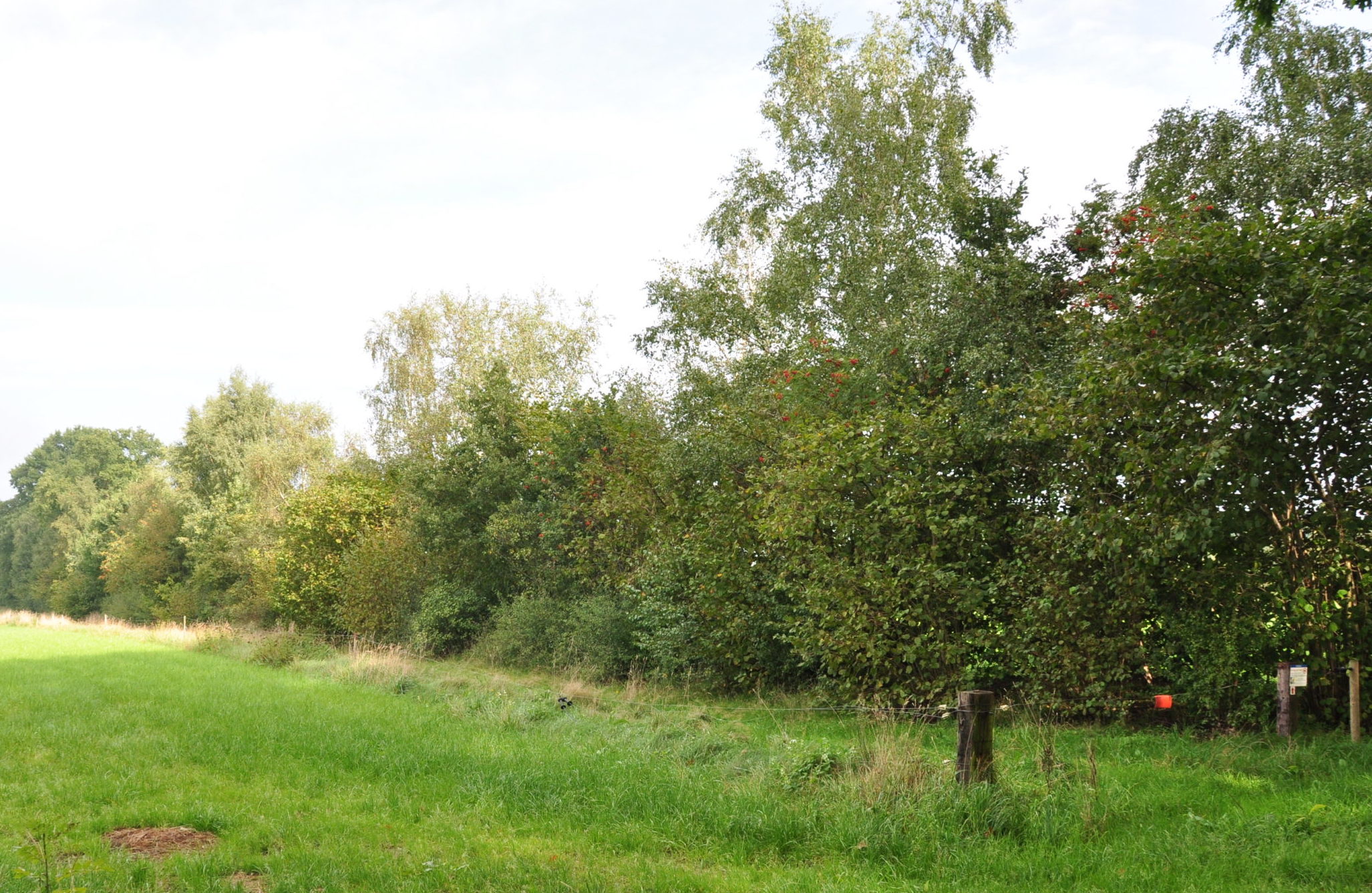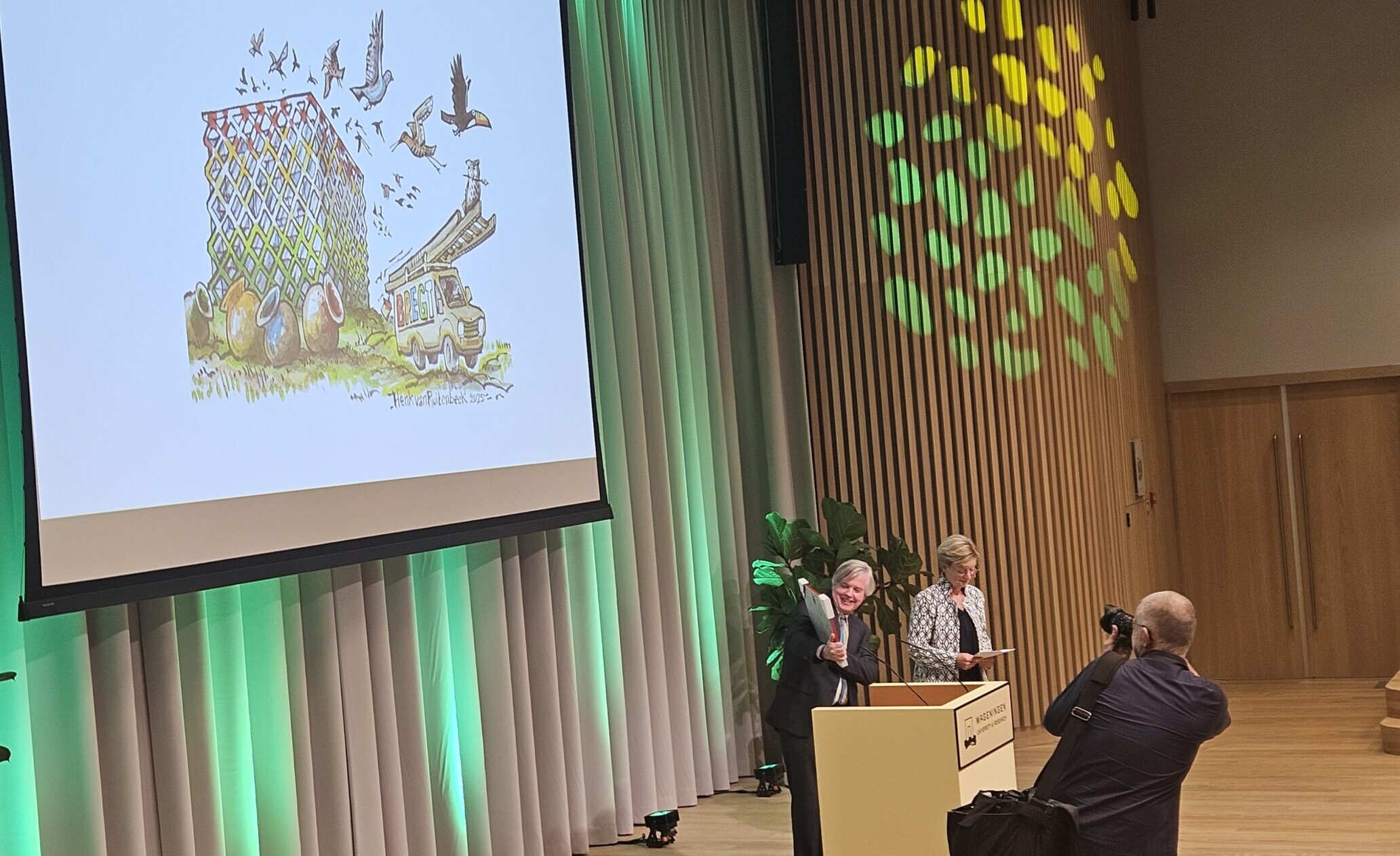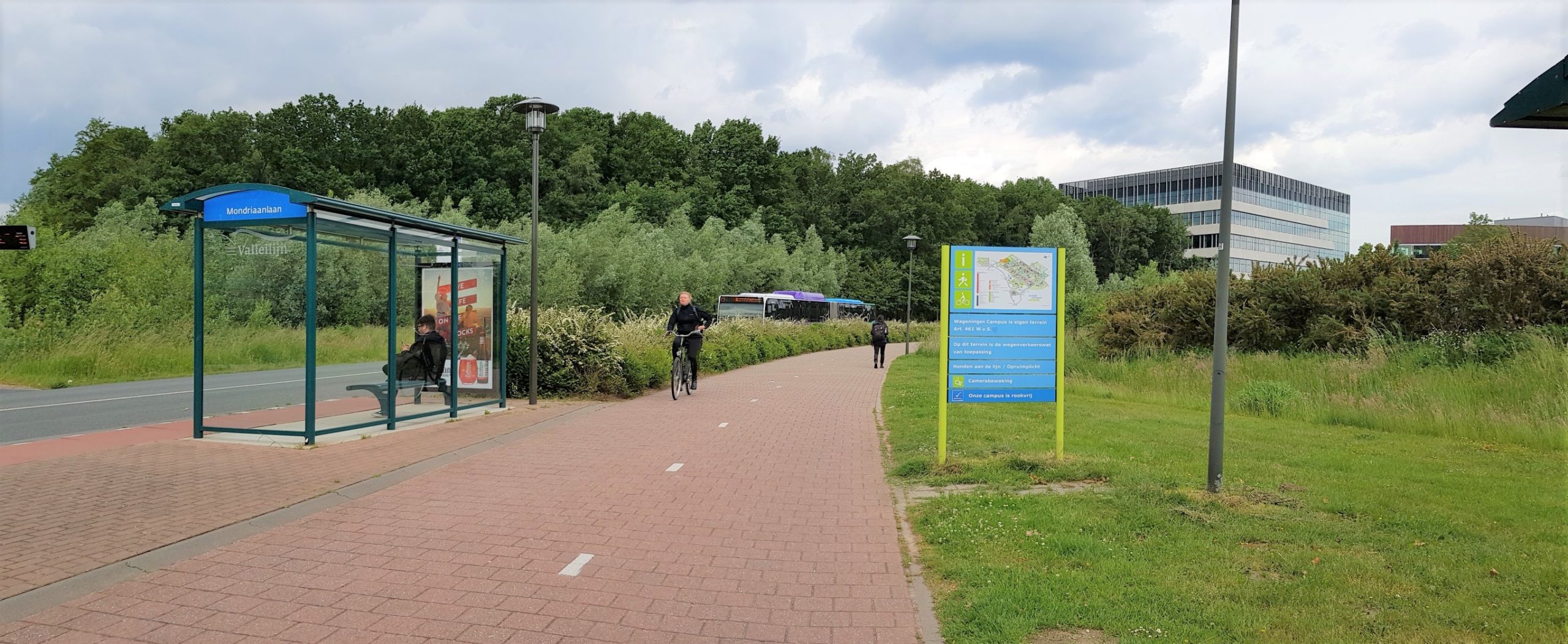Shelterbelts and hedgerows have ecological value and improve the appearance of the countryside, but can they also be functional and financially viable elements on dairy farms? Agro-innovation centre De Marke has set out to answer this question in the Hedgerow 2.0 project.
“The idea is to create a demonstration project at De Marke to demonstrate the potential of shelterbelts to farmers,” says project leader Rob Geerts of Wageningen Plant Research’s Agrosystems Research group. The project involves planting a shelterbelt of some two to three hundred metres in length that will be divided into a number of sections, each with a different function. In addition to the demonstration project at De Marke, they also intend to plant functional shelterbelts at two dairy farms in the Achterhoek region of the province of Gelderland, one near Geesteren and one near Winterswijk.
Researchers from Wageningen Plant Research and the Louis Bolk Institute are designing and analysing various types of shelterbelts, with variations in plant species, tree heights and location. These will be multifunctional hedgerows that will naturally blend in with the small-scale rural landscape and dry sandy soils of the Achterhoek region.
Revenue model
Dairy farmers today often see such ecologically important landscape elements as obstacles to production. Shelterbelts have lost historically important functions, for example as fencing for cattle or as a source of firewood, while they still require maintenance and can affect the quality of the grassland (e.g. through leaf fall or shading). Demonstrating the value of hedgerows is therefore perhaps the most important aspect of the project, thinks Geerts. “Gelderland – in fact the whole of the Netherlands – is faced with a huge challenge: to save biodiversity and plant more forests and woodlands,” he says. “Land owners (in Gelderland mostly farmers) need to be presented with a realistic revenue model to win their support.” This is important, because planting shelterbelts reduces a dairy farmer’s crop production area and manure quota, as all land under trees is subtracted from these calculations.
Natural medicine cabinet
So the challenge is to make shelterbelts into functioning elements that positively contribute to dairy farm operations. “For example, by planting forage trees: trees that are rich in minerals, trace elements and other healthy nutrients that the cows can graze on at their leisure – rather like a natural medicine cabinet,” says Geerts. “The willow is a good example: it contains salicin, a component of aspirin.”
In addition, shelterbelts could help counter climate change. “Soils adjacent to and under hedgerows are normally drier than elsewhere on the farm. However, last summer we clearly saw that the pasture next to a hedgerow was actually greener than the rest of the land, perhaps because it was cooler there, or the conditions were slightly more humid. Further research is needed, but as with herb-rich grassland, hedgerows could well help to make dairy farms more climate resistant.” In addition, hedgerows provide natural shade for grazing animals.
Carbon dioxide, nitrogen and particulate matter
Other functions the project is exploring include carbon sequestration and the absorption of nitrogen and particulate matter. “We know that certain trees and shrubs can capture up to 20% of nitrogen and particulate matter, provided you plant them in the right place. We want to learn more about how that works,” Geerts explains. “Perhaps shelterbelts could play a role around animal sheds. Or they could be planted as buffers around nitrogen-sensitive Natura2000 protection areas, such as near Winterswijk, where one of the two dairy farms participating in the project is located.”
It is not easy to establish what financial benefits shelterbelts can have for farmers.
The project is also examining the potential of plants for human consumption, such as nut trees and berry bushes. “But most dairy farmers will not be too keen on this option, because they have no experience with harvesting and marketing agroforestry products. It is not easy to determine how these products can benefit farmers. However, this does tie in neatly with WUR’s other agroforestry projects, such as at the Dairy Campus in Leeuwarden and the Field crops project.”
Long-term project
The project is funded by the provincial Nature-Inclusive Agriculture for Gelderland Action Plan and will run at least until mid-2024, says Rianne van Binsbergen, coordinator of the project at De Marke. “We definitely want to continue the project after that, so we will look for new funding when this term runs out,” she says. The new shelterbelts will be planted this autumn, but they will not be immediately usable for the study. However, an existing hedgerow near De Marke offers a solution. “These trees were planted in the early days of De Marke and they now form a mature shelterbelt,” explains Geerts.
Geerts expects that dairy farmers in Gelderland in particular will follow the project with much interest. “This province is faced with a major challenge, but there is also a relatively large amount of funding available. Last year, the province of Gelderland already put up millions to compensate land owners for the depreciation of farmland. Farmers were compensated in one lump sum if they planted a hedgerow. That helped to generate a lot of interest in our project.”

 A hedgerow planted in the early days of De Marke (photo: De Marke).
A hedgerow planted in the early days of De Marke (photo: De Marke). 

